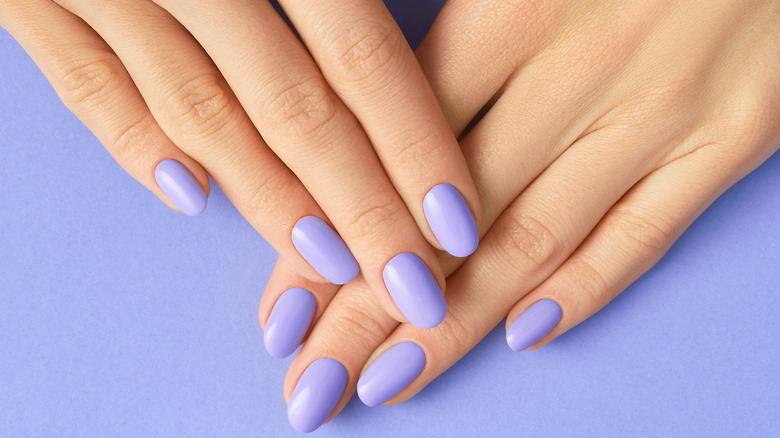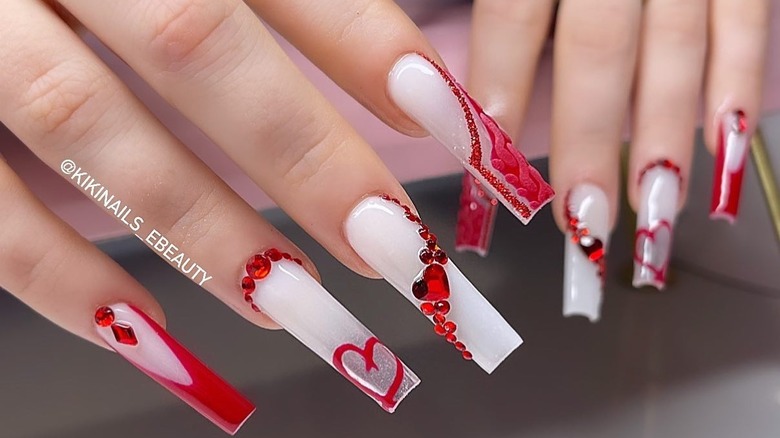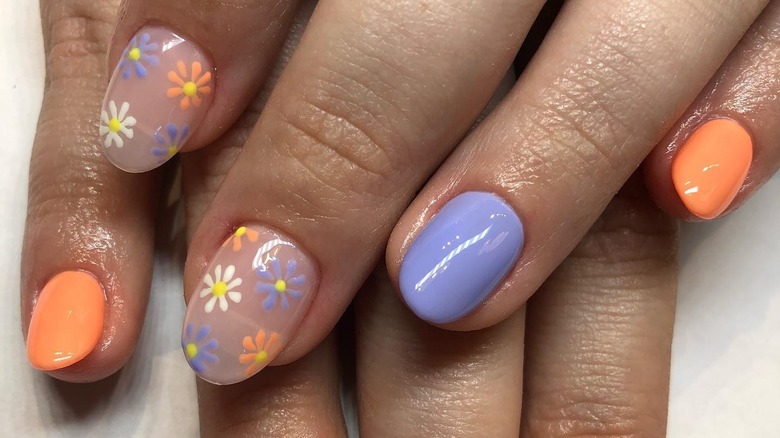Which Nail Shapes Are Most Likely To Break (And Which Are Strongest)?
It can be easy to get overwhelmed at the nail salon when so many choices exist. Besides picking a color and the type of manicure you want, there's also the question of nail shape. There are eight common nail shapes: round, almond, oval, coffin, squoval, stiletto, ballerina, and square. Choosing the correct shape to accentuate your hands and nails rests on the shape and size of your fingers. For example, if you have shorter fingers, then oval, round, and almond shapes will work best. On the other hand, square and stiletto shapes are ideal for longer fingers.
Squoval is unique because it flatters every finger type and is low maintenance. And as the same suggests, it combines a square and oval shape. For more of an oomph factor, coffin or ballerina nails are the way to go. They are sleek and provide drama. But beyond finger shape, you must take into account the durability of their nails and how much time and money they are willing to spend on maintenance. Unfortunately, some nail shapes are more susceptible to breakage than others.
Square and coffin nails: elegant but fragile
Both square and coffin nails are trendy nail shapes. Square nails can be worn short or long. While they are straightforward and classic, coffin nails are the opposite. They are high-maintenance, bold, and edgy. Moreover, coffin nails, which are long and tapered, have recently exploded on social media thanks to reality superstar Kylie Jenner who often shares her coffin manicure online. Despite their differences, square and coffin nails share something in common; they have sharp edges. Although this makes them distinct, it also makes them break easier. For this reason, experts suggest having long and strong nails before choosing a coffin nail shape.
And if your square or coffin nail does break? Nail expert and Olive & June founder Sarah Gibson Tuttle shared her advice with Makeup. "If you break a nail, it's best to smooth any jagged edges as soon as possible to prevent further breakage," she stated. "If the break extends to the nail bed, it might be time to see a doctor as this can lead to an infection." Gibson Tuttle also notes that If the break isn't too severe, you can file your nail in one direction to best create the illusion of a uniform appearance. Likewise, this ensures that the break won't spread.
Short nail shapes are the way to go
Short and round nails will better suit your needs if you want to avoid dealing with broken nails or if you have weak nails. Sarah Gibson Tuttle told Makeup why this is so. She said, "Think round, oval, squoval, or even almond. Round and squoval nails are most resistant to breakage because there are no sharp edges that can cause weak points in the nail." In addition, there are various pros to these shapes. Round, oval, and almond make fingers appear longer than they actually are. Squoval nails are simple yet graceful, and If you keep them shorter, they are less likely to break.
If you're absolutely committed to square and coffin nails, the best course of action is strengthening your nails to ensure they don't break. Tips to strengthen nails include using gloves to wash dishes and temporarily avoiding nail polish, gel, or acrylics. Dermatologist Dana Stern explained to Glamour, "Take a break from enhancements when your nails need a break, and keep nails shorter. Shorter nails are less prone to breakage and catching." You could also take a supplement such as biotin, which helps with hair and nail growth. However, make sure to speak to your doctor to see if biotin is right for you.


